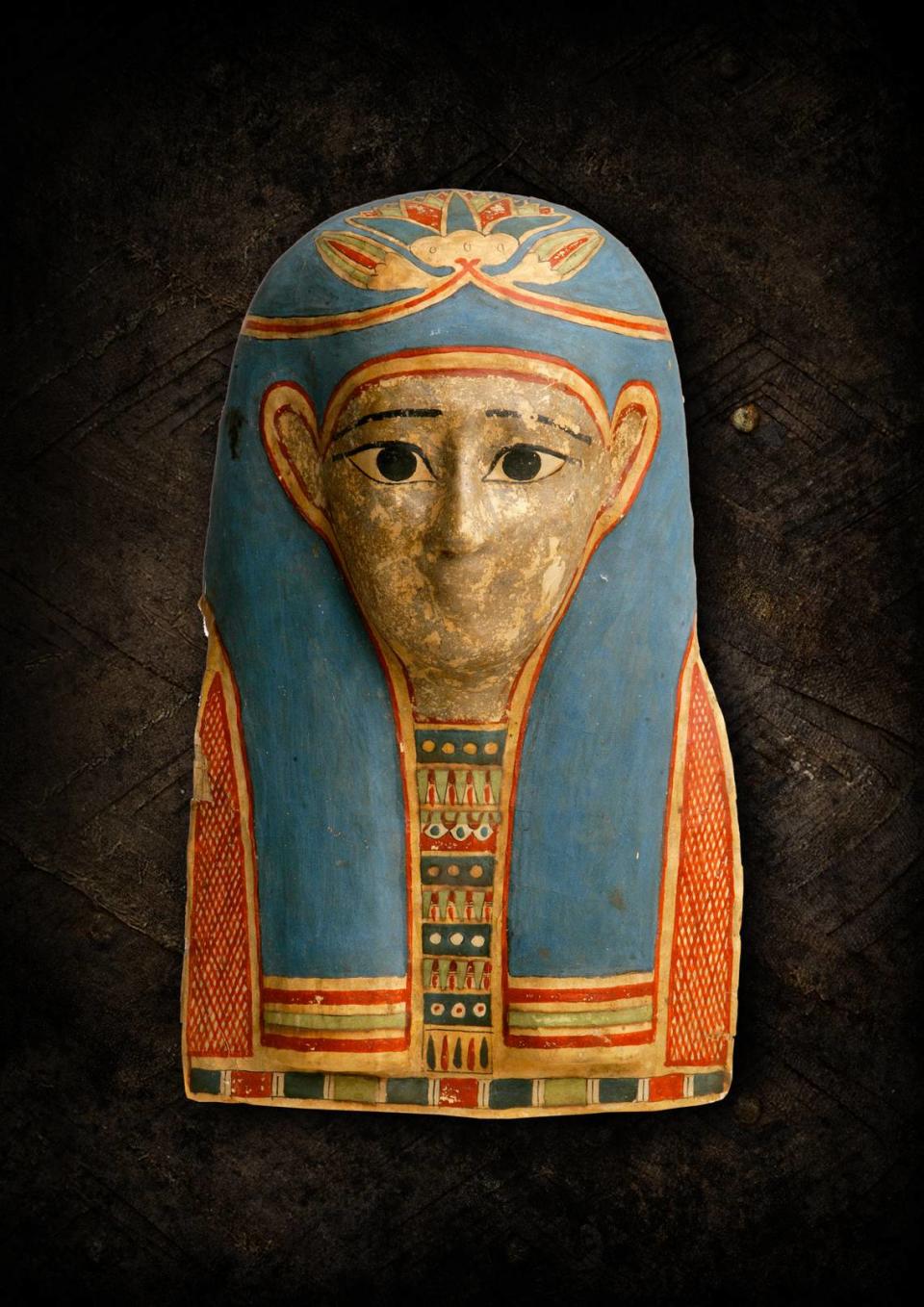Mummies at NC museum tell tale of people’s hopes and dreams from 2,000 years ago
More than 2,000 years ago, the Egyptians laid an upper-class woman named Tasheriankh inside her wooden coffin, launching her into the afterlife loaded with ancient bling.
A golden mask fits snugly over her face, and a papier-mâché cartonnage covers her chest like a bib — all of it decorated with Anubis, the jackal-headed god of the underworld.
And under this funeral costume, Tasheriankh’s slim form still persists, wrapped in linen bandages, inches away from Raleigh’s prying eyes.
“That person is super lucky,” said Carolina Rocheleau, curator of ancient art at the NC Museum of Art, motioning to the coffin and its lid.
“We call it the double-decker,” Rocheleau said. “The more symbols you have, the more chances you have to be reborn.”
Starting Saturday, the museum will open “Golden Mummies of Egypt,” featuring eight ancient people contained within their famously long-lasting funerary garb. The traveling exhibit comes to Raleigh from the Manchester Museum in England, which is renovating its ancient section.
The Egyptians called mummies “glorious beings,” transformed from everyday life into beings akin to gods, ready for their meeting with Osiris, who ruled over fertility, death and resurrection.
Such elaborate rites were reserved for the wealthiest of Egyptians, no more than 10%, though in the darkened exhibit halls of the museum’s East building, they lay as silently as the common dead, their secrets untold.
They are also considerably shorter than the modern museum visitor. Tasheriankh’s coffin could double as a guitar case.
“It’s more than just about mummies,” Rocheleau said. “It’s about people. It’s about their beliefs. It’s about their hopes and dreams for the afterlife.”

‘Not King Tut’
The period of these mummies’ lives spans roughly 300 B.C.E to 200 C.E., which follows the age of pharaohs and covers the Greek and Roman eras.
“This is a period that has been shoved to the side because it’s not pharaonic,” said Rocheleau. “It’s not pure. It’s not King Tut.”
These mummies would have known the conquests of Alexander the Great up until the rule of Constantine, the first Christian emperor of Rome.
But though they might have dressed in classical robes, as was the style, they remained thoroughly Egyptian. While Greeks and Romans favored cremation and ashes in urns, Egyptians stuck to mummies until Constantine’s time.
“It’s not the Greeks and Romans that killed ancient Egypt,” she said. “It was Christianity.”

Housed in a dark, lower floor that takes on a tomblike quality, the collection includes papyri, jewelry and ceramic depictions of the gods, connecting to the museum’s own permanent collection in the free gallery.
Among the ancient visitor is a mummied child, likely 2 or 3 years old, wrapped in a Roman-style bandage with a diagonal pattern and golden studs. By the time the Romans came on the scene, the Egyptians had done away with coffins, placing their dead inside tombs.
But for all their ornateness, the mummies’ most astounding quality is their human form, preserved from an age that sought eternity as dearly as does this one.
If you go
What: “Golden Mummies of Egypt” will be at the N.C. Museum of Art, 2110 Blue Ridge Road, Raleigh
When: March 6 to July 11. Wednesday to Sunday 10 a.m. to 5 p.m. Closed Monday and Tuesday.
Tickets: $20 for nonmember adults, $17 for seniors and $14 for youth ages 7–18. Free entry with college ID every Friday, 3–5 p.m. Free for children 6 and younger. Capacity is limited by COVID-19 restrictions. Tickets must be reserved in advance by emailing help@ncartmuseum.org.
Info: ncartmuseum.org.

